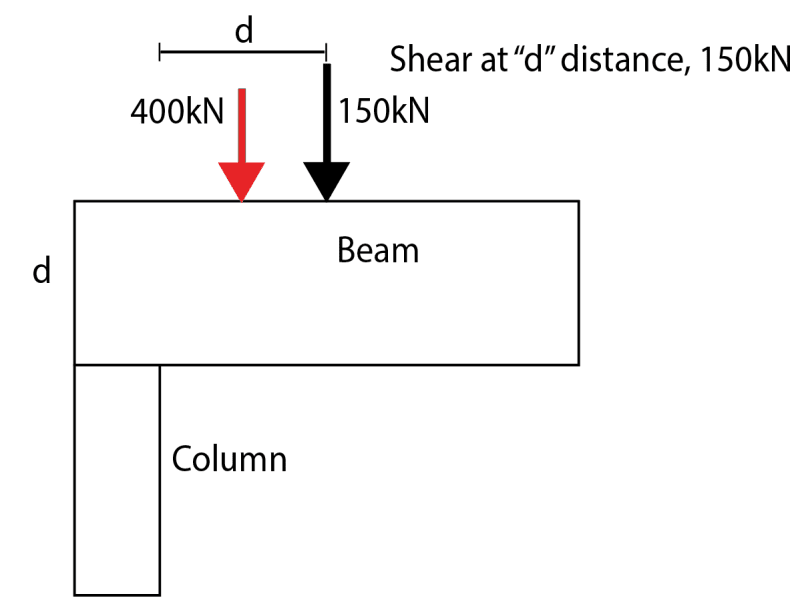Pretty Girl7
Civil/Environmental
Following equation is for the calculation of shear r/f for a beam according to Eurocode. The Eurocode expects us to calculate the shear force at a distance of "d" from the supports.
Let's suppose the shear force at a distance of "d" is 150kN, and red arrow shear force (from a point load etc) 400 kN, more close to the supports than a distance "d" shear force.
My question is, if there are any bigger shear force (from the red arrow point load) is present more close to the supports, aren't we missing the critical red shear force?
The critical shear force is not the shear force at the distance at "d" in this case, so why we take the shear force at distance "d"?


Let's suppose the shear force at a distance of "d" is 150kN, and red arrow shear force (from a point load etc) 400 kN, more close to the supports than a distance "d" shear force.
My question is, if there are any bigger shear force (from the red arrow point load) is present more close to the supports, aren't we missing the critical red shear force?
The critical shear force is not the shear force at the distance at "d" in this case, so why we take the shear force at distance "d"?



